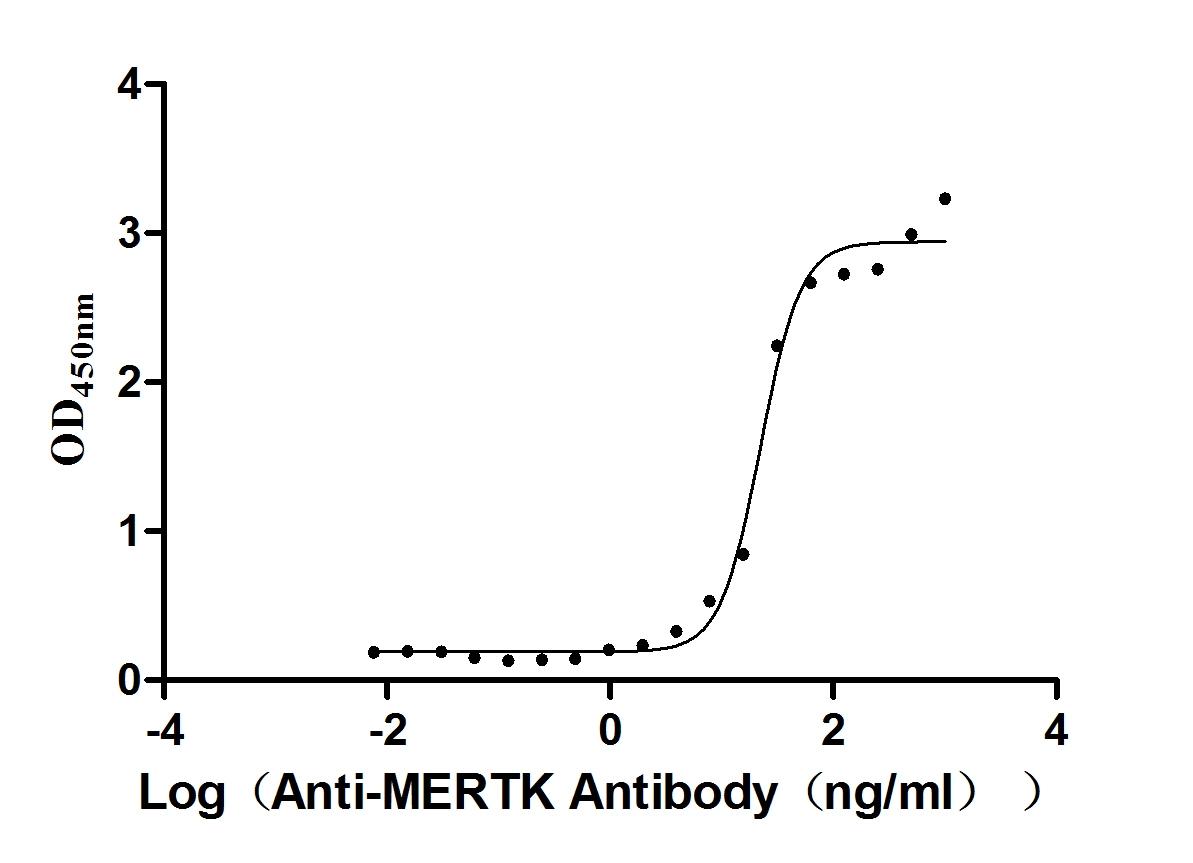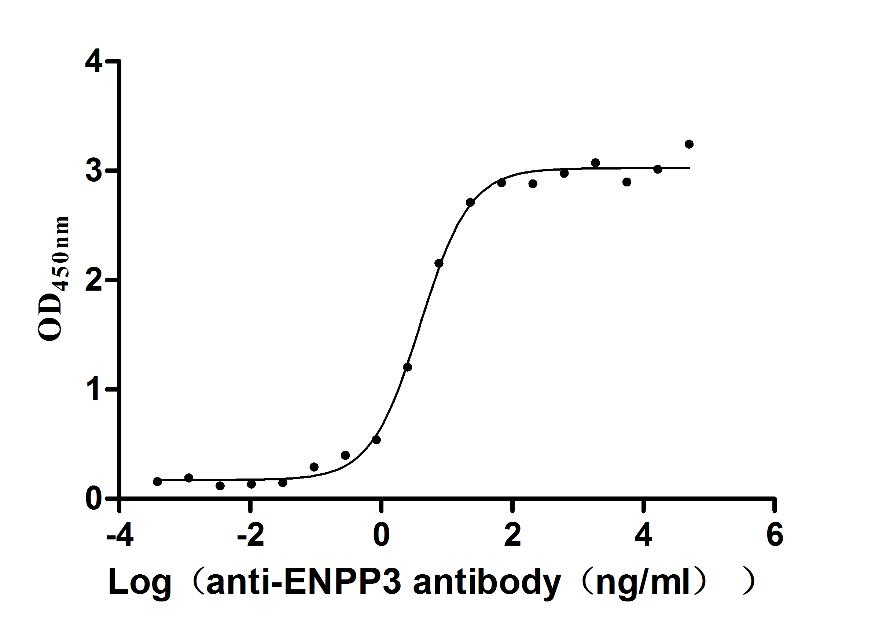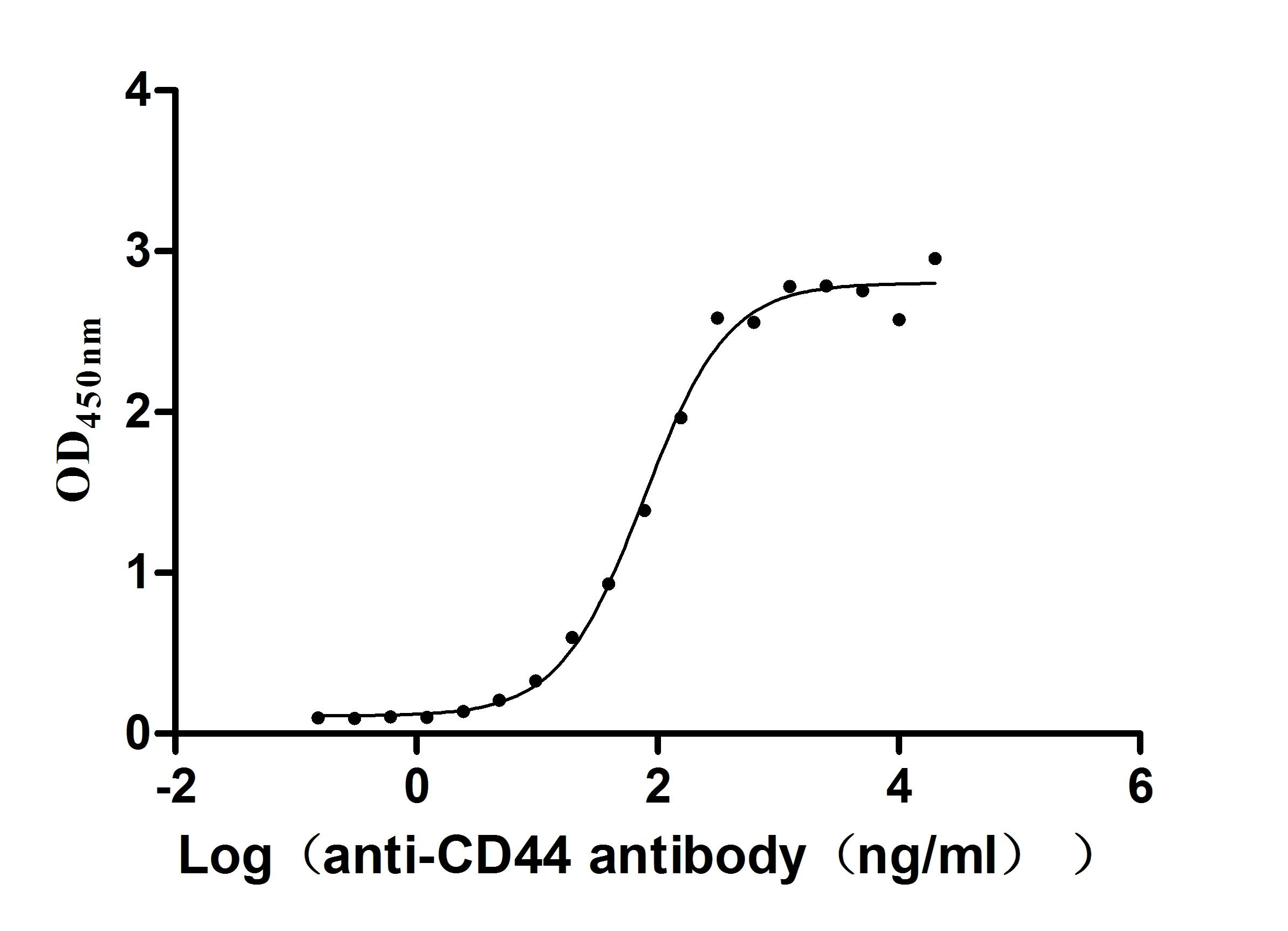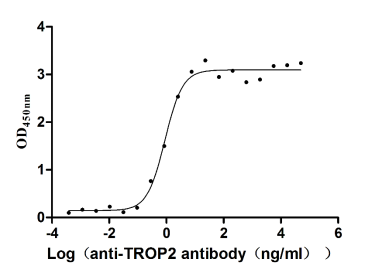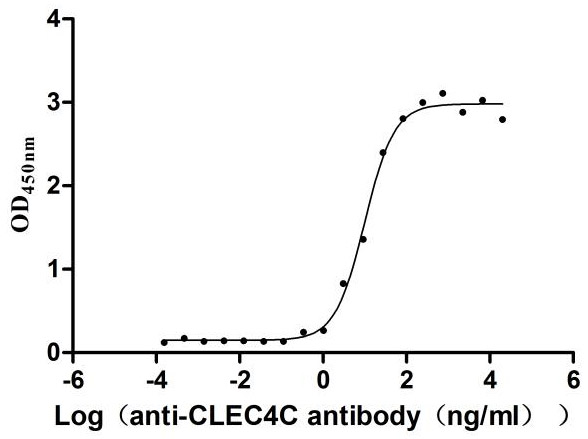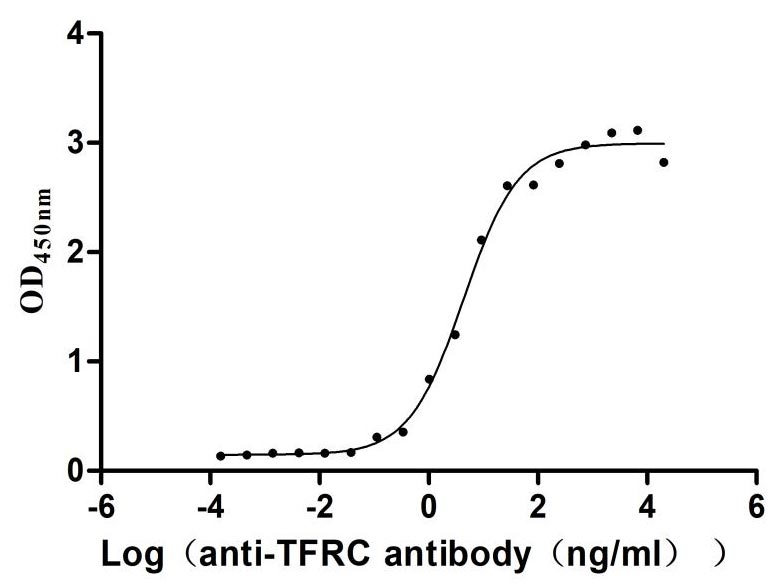Recombinant Human P2Y purinoceptor 6 (P2RY6), partial
-
中文名稱:人P2RY6重組蛋白
-
貨號(hào):CSB-YP618975HU1
-
規(guī)格:
-
來源:Yeast
-
其他:
-
中文名稱:人P2RY6重組蛋白
-
貨號(hào):CSB-EP618975HU1
-
規(guī)格:
-
來源:E.coli
-
其他:
-
中文名稱:人P2RY6重組蛋白
-
貨號(hào):CSB-EP618975HU1-B
-
規(guī)格:
-
來源:E.coli
-
共軛:Avi-tag Biotinylated
E. coli biotin ligase (BirA) is highly specific in covalently attaching biotin to the 15 amino acid AviTag peptide. This recombinant protein was biotinylated in vivo by AviTag-BirA technology, which method is BriA catalyzes amide linkage between the biotin and the specific lysine of the AviTag.
-
其他:
-
中文名稱:人P2RY6重組蛋白
-
貨號(hào):CSB-BP618975HU1
-
規(guī)格:
-
來源:Baculovirus
-
其他:
-
中文名稱:人P2RY6重組蛋白
-
貨號(hào):CSB-MP618975HU1
-
規(guī)格:
-
來源:Mammalian cell
-
其他:
產(chǎn)品詳情
-
純度:>85% (SDS-PAGE)
-
基因名:
-
Uniprot No.:
-
別名:P2RY6; PP2891; P2Y purinoceptor 6; P2Y6
-
種屬:Homo sapiens (Human)
-
蛋白長(zhǎng)度:Partial
-
蛋白標(biāo)簽:Tag?type?will?be?determined?during?the?manufacturing?process.
The tag type will be determined during production process. If you have specified tag type, please tell us and we will develop the specified tag preferentially. -
產(chǎn)品提供形式:Lyophilized powder
Note: We will preferentially ship the format that we have in stock, however, if you have any special requirement for the format, please remark your requirement when placing the order, we will prepare according to your demand. -
復(fù)溶:We recommend that this vial be briefly centrifuged prior to opening to bring the contents to the bottom. Please reconstitute protein in deionized sterile water to a concentration of 0.1-1.0 mg/mL.We recommend to add 5-50% of glycerol (final concentration) and aliquot for long-term storage at -20℃/-80℃. Our default final concentration of glycerol is 50%. Customers could use it as reference.
-
儲(chǔ)存條件:Store at -20°C/-80°C upon receipt, aliquoting is necessary for mutiple use. Avoid repeated freeze-thaw cycles.
-
保質(zhì)期:The shelf life is related to many factors, storage state, buffer ingredients, storage temperature and the stability of the protein itself.
Generally, the shelf life of liquid form is 6 months at -20°C/-80°C. The shelf life of lyophilized form is 12 months at -20°C/-80°C. -
貨期:Delivery time may differ from different purchasing way or location, please kindly consult your local distributors for specific delivery time.Note: All of our proteins are default shipped with normal blue ice packs, if you request to ship with dry ice, please communicate with us in advance and extra fees will be charged.
-
注意事項(xiàng):Repeated freezing and thawing is not recommended. Store working aliquots at 4°C for up to one week.
-
Datasheet :Please contact us to get it.
相關(guān)產(chǎn)品
靶點(diǎn)詳情
-
功能:Receptor for extracellular UDP > UTP > ATP. The activity of this receptor is mediated by G proteins which activate a phosphatidylinositol-calcium second messenger system.
-
基因功能參考文獻(xiàn):
- Prostaglandin E2 glyceryl ester is an endogenous agonist of the nucleotide receptor P2Y6. PMID: 28539604
- The present study shows that sustained activation of P2Y6R may contribute to intestinal tumorigenesis by blocking the apoptotic process and by contributing to chemoresistance, a substantial concern in the treatment of patients with CRC. PMID: 29454075
- UDP/P2Y6 receptor signaling is involved in the regulation of IgE-dependent degranulation in basophils, which might stimulate the P2Y6 receptor via the autocrine secretion of UTP. Thus, this receptor represents a potential target to regulate IgE-dependent degranulation in basophils during allergic diseases. PMID: 28318884
- Expression levels of P2Y6 receptor were higher in Parkinson's disease patients compared to healthy controls. PMID: 28219441
- These data suggest that, without infection, inactivated-H5N1 induces mRNA expression of IL-6 and CXCL8 by a mechanism, or mechanisms, requiring interaction between viral hemagglutinin and alpha-2,3 sialic acid receptors at the cell membrane of host cells, and involves activation of P2Y6 purinergic receptors. PMID: 28494003
- Rescuing miR-185 expression to inhibit P2Y6 may represent a therapeutic strategy against human aortic vascular smooth muscle cells dysfunction and hypertension. PMID: 28277742
- data demonstrate that HNP-1 induces IL-8 production not only through P2Y6, but also through additional P2 receptors via an ERK1/2-dependent mechanism in intestinal epithelial cells. PMID: 25816245
- nucleotides released during the airway inflammatory processes will activate P2Y6 receptors, which will lead to further release of inflammatory cytokines. PMID: 25243587
- Data indicate that after P2Y6 receptor stimulation both phospholipase D (PLD) and DGKzeta enzymes are responsible for producing phosphatidic acid (PA). PMID: 23723068
- Using rat P2Y6 recombinant protein expressed in human astrocytoma cells, the authors found that the P2Y6 receptor is highly selective for UDP over UTP. PMID: 8700127
- no obvious correlation was found between the expression of P2Y6 and breast cancer cell proliferation PMID: 22558990
- Report role of ecto-NTPDases on UDP-sensitive P2Y(6) receptor activation during osteogenic differentiation of primary bone marrow stromal cells from postmenopausal women. PMID: 21898410
- P2Y(6) receptor signaling pathway may be a potential therapeutic target for MSU-associated inflammatory diseases, such as tophaceous gout. PMID: 22102722
- P2Y6 receptor transgene is an important endogenous inhibitor of T cell function in mice with allergic pulmonary inflammation PMID: 21724990
- human microvascular endothelia exposed to inflammatory stimuli, followed by measurements of P2Y or P2X transcriptional responses, showed a selective induction of the P2Y(6) receptor PMID: 21173118
- activation of P2Y6 receptor mediates the UVB-radiation-induced activation of p38 MAPK and expression of COX-2 PMID: 21388279
- P2Y6 receptors and ADAM17 mediates the low-dose gamma-radiation-induced activation of EGFR. PMID: 21268712
- modulation of human cavernosal smooth muscle relaxation can be achieved by activation of the P2Y6 receptor via non-neuronal and non-NO-dependent mechanisms, reinforcing the possible involvement of purinergic signalling in the erectile process PMID: 17971163
- hypertonic stress increases T cell interleukin-2 expression through a mechanism that involves ATP release, P2 receptor, and p38 MAPK activation PMID: 12464620
- P2Y(6) receptors interact rapidly with the TNF alpha-related intracellular signals to prevent apoptotic cell death. PMID: 12623123
- P2Y6 receptors highly responsive to UDP are endogenously expressed in human neuroblastoma SK-N-BE(2)C cells and they are involved in modulation of phospholipase C-coupled receptor-mediated Ca2+ mobilization by depleting the IP3-sensitive Ca2+ stores PMID: 12716436
- findings expand the pro-inflammatory biology of UDP mediated by the P2Y6 receptor PMID: 15796906
- P2Y receptors revealed that the P2Y6 (ligand of UDP) signaling pathway plays a predominant role in mediating human neutrophil peptides-induced IL-8 production. PMID: 16322472
- inotropic effects of UDP, mediated by P2Y6 receptors PMID: 16543499
- on/off effect of IL-13 on P2Y(6)-induced Cl-secretion may help to identify the molecular determinants responsible for the CaCC channel activity PMID: 17762175
- P2Y6 receptor expression is increased by the stress-associated inflammatory response of Caco-2 intestinal epithelial cells. PMID: 18250478
- These results indicate that activation of Galpha(12/13) in cardiomyocytes by the extracellular nucleotides-stimulated P2Y(6) receptor triggers fibrosis in pressure overload-induced cardiac fibrosis PMID: 19008857
- P2Y agonists stimulate Ca(2+)-dependent Cl(-) secretion across human bronchial epithelia and that the cAMP/PKA pathway regulates apical but not basolateral P2Y(6) receptor-coupled ion transport in human bronchial epithelia PMID: 19011163
- Human mast cells express uridine diphosphate-selective P2Y6 receptors that cooperate with type 1 cysteinyl-leukotriene receptors to promote cell survival and chemokine generation by a pathway involving reciprocal ligand-mediated cross-talk. PMID: 19124756
顯示更多
收起更多
-
亞細(xì)胞定位:Cell membrane; Multi-pass membrane protein.
-
蛋白家族:G-protein coupled receptor 1 family
-
數(shù)據(jù)庫(kù)鏈接:
Most popular with customers
-
Recombinant Human Claudin-18.2 (CLDN18.2)-VLPs (Active)
Express system: Mammalian cell
Species: Homo sapiens (Human)
-
Recombinant Mouse Tyrosine-protein kinase Mer (Mertk), partial (Active)
Express system: Mammalian cell
Species: Mus musculus (Mouse)
-
Express system: Mammalian cell
Species: Macaca fascicularis (Crab-eating macaque) (Cynomolgus monkey)
-
Recombinant Macaca fascicularis CD44 antigen (CD44), partial (Active)
Express system: Mammalian cell
Species: Macaca fascicularis (Crab-eating macaque) (Cynomolgus monkey)
-
Recombinant Macaca fascicularis lymphocyte antigen 6 family member G6D (LY6G6D) (Active)
Express system: Yeast
Species: Macaca fascicularis (Crab-eating macaque) (Cynomolgus monkey)
-
Recombinant Human Tumor-associated calcium signal transducer 2 (TACSTD2), partial (Active)
Express system: Mammalian cell
Species: Homo sapiens (Human)
-
Recombinant Human C-type lectin domain family 4 member C (CLEC4C), partial (Active)
Express system: Mammalian cell
Species: Homo sapiens (Human)
-
Recombinant Human Transferrin receptor protein 1 (TFRC), partial (Active)
Express system: Mammalian cell
Species: Homo sapiens (Human)


-AC1.jpg)
